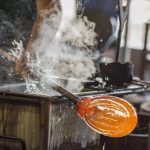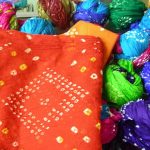Banarasi Paan has been an integral part of Indian culture for centuries, tracing its origins back to the ancient city of Varanasi. This quintessential Indian treat has been passed down through generations, evolving into a variety of flavors and ingredients. Banrasi Paan has also received the Geographical Indication (GI) tag.
Banarasi Paan has been associated with Indian culture for thousands of years. The word “paan” originates from the Sanskrit term पर्ण which translates to “leaf.” The use of betel leaves, a key ingredient in paan, is documented in ancient Indian texts such as the Atharva Veda and Kama Sutra.
Paan holds a significant place in Indian society, consumed by people across diverse socio-economic backgrounds. It is considered a gesture of hospitality, and offering paan to guests is a symbol of respect and warmth. In many parts of India, paan is also consumed as a digestive aid and mouth freshener after meals.
Ingredients and Preparation:
Banarasi Paan is a harmonious blend of flavors and textures. The key ingredients include betel leaves, areca nut (supari), slaked lime (chuna), and catechu (kattha). To make Banarasi Paan, a betel leaf is smeared with slaked lime and catechu, and then filled with finely chopped areca nuts, spices, sweeteners, and sometimes tobacco.
The art of preparing Banarasi Paan lies in the choice and balance of ingredients. Some of the most popular additions include cardamom, saffron, rose petal preserve (gulkand), desiccated coconut, and various types of sweeteners. Each ingredient imparts its unique flavor, creating a delightful medley of taste in every bite.
Serving and Consumption:
Paan is typically folded into a triangular shape, known as a “gilori.” The gilori is then placed in the mouth, where it is slowly chewed and savored. The combination of flavors and juices released as the paan is chewed create an explosion of taste. It is important to note that Banarasi Paan should be consumed in moderation, as some of its ingredients, like slaked lime and tobacco, can have harmful effects on health when consumed in excess. However many paan varieties are harmless as they do not contain any such material. On the contrary they help in digestion. Check with your Paanwala and he can suggest you the right variety.
Paan shops serve as a gathering place for people from all walks of life to socialize, discuss news and current events, and share stories. It is not uncommon to see people from different social classes and backgrounds coming together at a paan shop. It serves as a place where people can connect, share their experiences and form relationships, which can ultimately lead to a stronger sense of community.





